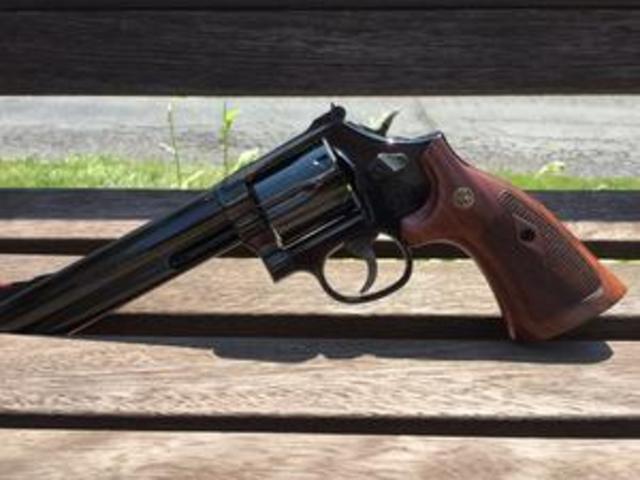You are using an out of date browser. It may not display this or other websites correctly.
You should upgrade or use an alternative browser.
You should upgrade or use an alternative browser.
S&W Model 19
- Thread starter Mr_Flintstone
- Start date
- Status
-
Not open for further replies.
RealGun
Member
My 19 is a reloader's gun. I don't avoid recoil but have a pretty good sense of what a gun's limitations are in my hands. I reload 357 cases with no more than the published "starting" load, heavier than my "small gun" 357 load.My Model 19-3, which rarely gets shot.
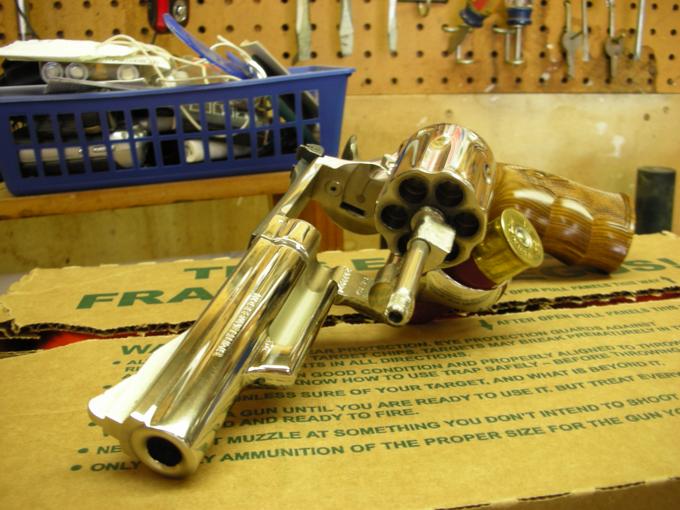
If shooting magnum loads, I use my 686.
Driftwood Johnson
Member
Howdy
Here is my Model 19-3 that I bought brand-spanky new in 1975. I still have the box and all the goodies. It cost $125, which was a lot of money back then for a kid in his twenties.
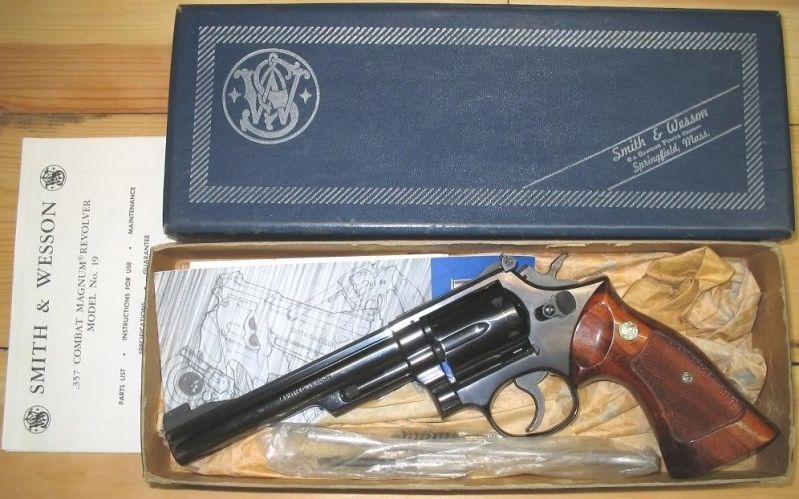
The gun is still quite pristine, with just a tiny cylinder line and the blue is probably around 95%. There is a bit of wear to the finish on the grips.
I agree with Cajun Brass, I don't see much sense firing magnums out of it just to punch holes in paper or to kick tin cans around at the berm. Why did I buy it? Because I was a kid in my 20s and it was so cool! I don't hunt, but if I did I would probably carry a Model 28 instead of my Model 19, much more pleasant to shoot with full magnum loads.
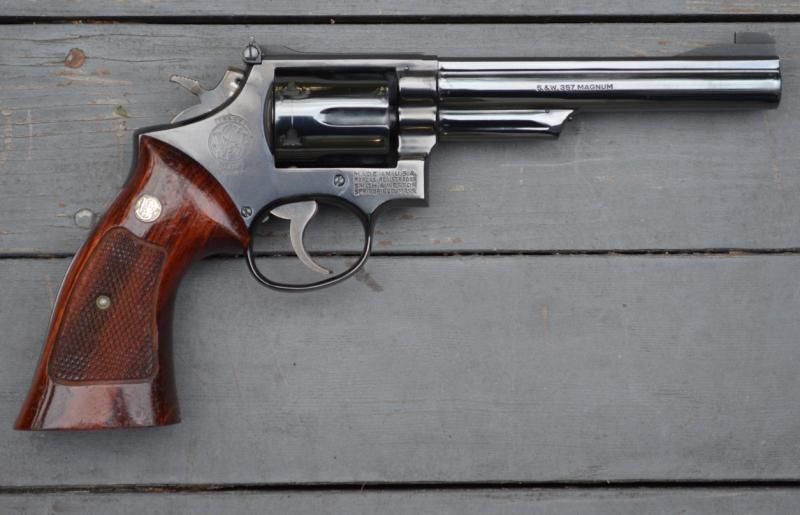
Here is my Model 19-3 that I bought brand-spanky new in 1975. I still have the box and all the goodies. It cost $125, which was a lot of money back then for a kid in his twenties.

The gun is still quite pristine, with just a tiny cylinder line and the blue is probably around 95%. There is a bit of wear to the finish on the grips.
I agree with Cajun Brass, I don't see much sense firing magnums out of it just to punch holes in paper or to kick tin cans around at the berm. Why did I buy it? Because I was a kid in my 20s and it was so cool! I don't hunt, but if I did I would probably carry a Model 28 instead of my Model 19, much more pleasant to shoot with full magnum loads.

RealGun
Member
Howdy
Here is my Model 19-3 that I bought brand-spanky new in 1975. I still have the box and all the goodies. It cost $125, which was a lot of money back then for a kid in his twenties.

The gun is still quite pristine, with just a tiny cylinder line and the blue is probably around 95%. There is a bit of wear to the finish on the grips.
I agree with Cajun Brass, I don't see much sense firing magnums out of it just to punch holes in paper or to kick tin cans around at the berm. Why did I buy it? Because I was a kid in my 20s and it was so cool! I don't hunt, but if I did I would probably carry a Model 28 instead of my Model 19, much more pleasant to shoot with full magnum loads.

I think we punch holes in paper with magnum power to develop and maintain skills with a gun shooting at that power level. I mentioned that my 19 begs for moderate reloads, but no way am I shooting 38 from a 357 gun as long as I have both kinds of guns.
Mr_Flintstone
Member
Here's the only picture I have. I took it with my cell phone to post in the identification thread.

It's a 1975. It has very light chamber rings about 1/4 inch back, and some green around the grip emblem. Anyone know the best way to clean those?
It's a 1975. It has very light chamber rings about 1/4 inch back, and some green around the grip emblem. Anyone know the best way to clean those?
DM~
Member
I have two 19's, one in 357 mag. and the other in 44 spl...

I love them both!
DM

I love them both!
DM
RealGun
Member
What do you shoot in the 357?I have two 19's, one in 357 mag. and the other in 44 spl...

I love them both!
DM
DM~
Member
I shoot cast bullets in my revolves, that I cast myself, usually around 1,000 fps. (in 357) I have to admit I have "in the past" shot thousands of Sierra140HC bullets through it.
When it's loaded for HD, I use (lately) Hornandy HD loads...
DM
When it's loaded for HD, I use (lately) Hornandy HD loads...
DM
RealGun
Member
That is consistent with my thinking of the K-frame 357 Magnum as a reloader's gun. My loads are similar, but my chrony is still in the box for lack of a place to use it. For just 38, I have my Combat Masterpiece. My cases always match what is stamped on the barrel, because I have this thing about doing otherwise, especially when I have the privilege of owning more than one gun, each to suit the intended cartridge.I shoot cast bullets in my revolves, that I cast myself, usually around 1,000 fps. (in 357) I have to admit I have "in the past" shot thousands of Sierra140HC bullets through it.
When it's loaded for HD, I use (lately) Hornandy HD loads...
DM
Barry the Bear
Member
Used to have a 19-4 nickel snub as my EDC. I traded it like a fool couple years back. I miss that gun . Only k frame I have left is a model 65-3 .
jwp475
Member
The Model 19 will handle any 357 Magnum round. But, a steady diet of full house 357 Magnum rounds will most probably crack the forcing cone.
Current internet lore says that only the hot 125 grain loads will do it, but hot 158 grain loads will do it as well. I damaged my Model 19 in the 1980s with a steady diet of hot 158 grain loads.
Fortunately, S&W replaced my barrel at that time but I understand S&W does not have old S&W barrels any more.
Hope this helps.
Shoot enough rounds and all revolvers will have cracked and/or eroded forcing cones, even Ruger 44 mags. The lighter 125 and 110 grain 357 loads burn more powder than 158 grain loads and will be more abusive to the forcing cone.
Driftwood Johnson
Member
Shoot enough rounds and all revolvers will have cracked and/or eroded forcing cones, even Ruger 44 mags. The lighter 125 and 110 grain 357 loads burn more powder than 158 grain loads and will be more abusive to the forcing cone.
Sorry, but I have to disagree with you.
The problem with K frame S&W 357 Magnum revolvers is because of the relief cut on the bottom of the forcing cone put their in order to clear the gas ring. K frame S&W revolvers have had this cut put there ever since 1902, but it was never a problem with 38 Special revolvers. It became a problem with the first K frame, 357 Magnum, the 357 Combat Magnum, which later became the Model 19.
Here is a view of the forcing cone of another K frame 357 Magnum revolver, a Model 13-2. It is obvious how the relief cut makes the forcing cone thinner at the bottom. If a forcing cone is going to split, that is where it will split.
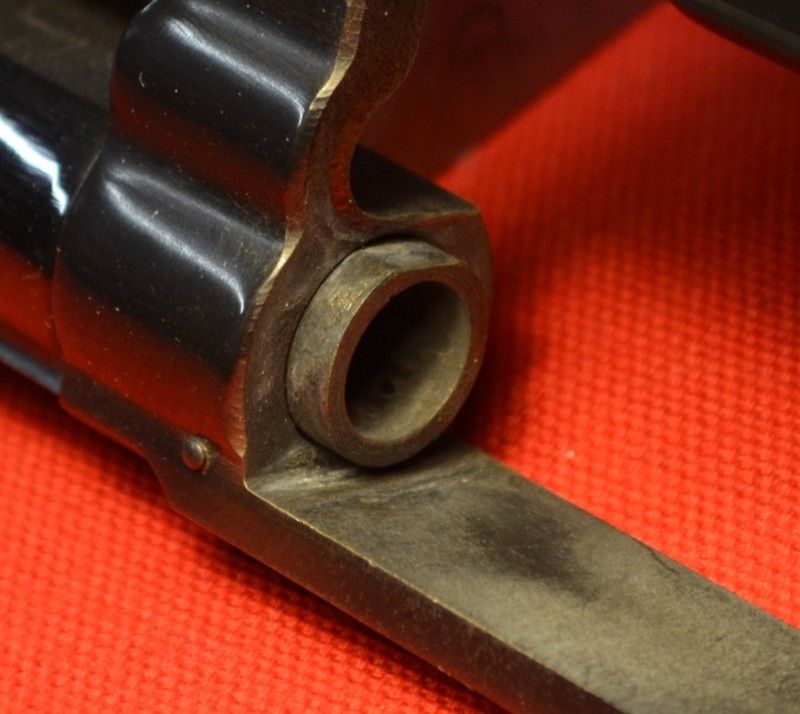
The very first 357 Magnum revolvers were built on the much bigger N frame. The diameter of the cylinder on these revolvers was big enough that no clearance cut was necessary on the forcing cone to clear the gas ring. Here is a view of the forcing cone of a 357 Magnum Model 28. there is no clearance cut on the forcing cone, it is of a constant thickness all the way around. This forcing cone is not prone to splitting.
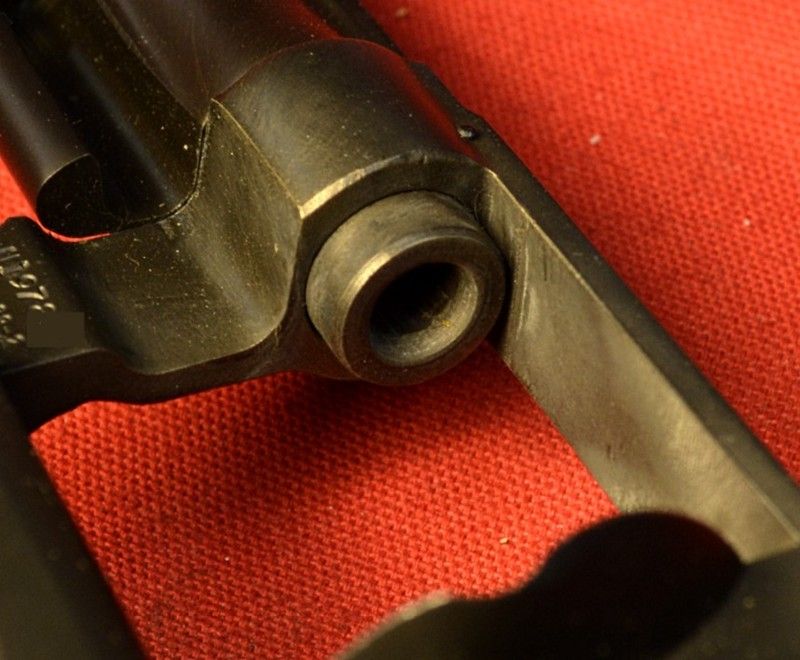
The L frame revolver was developed to get around the problem of the relief cut on the forcing cone of the K frame revolvers. The L frame is between the K frame and the N frame in size. As can be seen on this Model 686, there is no relief cut on the bottom of the forcing cone, it is of constant thickness all the way around. This forcing cone is not liable to split.
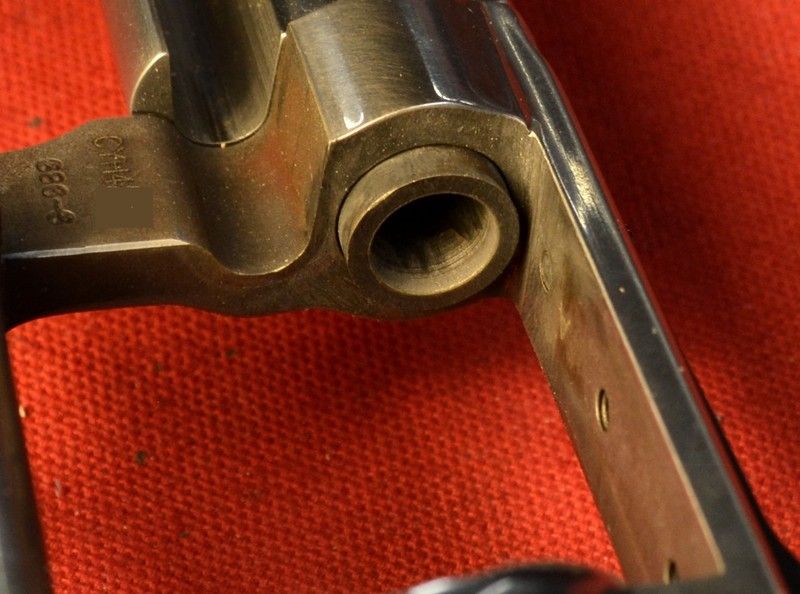
Forcing cone erosion is a different story. Sure, fire enough rounds and the forcing cone will erode, but that does not mean it will split.
It is obvious how the relief cut makes the forcing cone thinner at the bottom. If a forcing cone is going to split, that is where it will split.
Yup, that is exactly where the forcing cone on my Model 19 split.
When the forcing cone split, it suddenly became very difficult to open the cylinder. At the time, I was unaware of the forcing cone splitting on Model 19s but the split showed up during a brief inspection. The split was that obvious.
Sorry that I do not have any pictures, I know, "it did not happen without any pictures"
At some time later, I stumbled into an article some where mentioning the weakness in the Model 19 design. (Al Gore had not invented the internet yet, by the way). It explained alot.
Radagast
Member
More info here: http://www.gunblast.com/Butch_MagnumLoads.htm
1 LT MPC
Member
They did vary, I have a round grip frame on my 19.Did the guns vary in grip frame, so that some were "right" for concealed carry?
Radagast
Member
Rough rule of thumb, 2.5 inch barrels are round butt, 4 & 6 inch barrels are square. 19-7 and 19-8s made between 1996 and 1999 are round butt in 4 inch barrels, but not all 19-7s as some were made in square butt configuration before the change.
jwp475
Member
I know the M-19's have a relief cut, M-66's are more prone to forcing cone cracking than the blue steel revolvers.
Nothing posted above cancels my earlier post.
Nothing posted above cancels my earlier post.
- Status
-
Not open for further replies.
Similar threads
- Replies
- 62
- Views
- 5K
- Replies
- 28
- Views
- 1K


